Electronic Journal of Structural Engineering is an open access journal, so articles are freely available to the readers.
This issue remains dynamic and is updated regularly with new content until the release of the subsequent periodic issue. This approach ensures that the journal provides the most up-to-date research insights, facilitating timely access to advancements and findings. Researchers and readers are encouraged to revisit the issue frequently for the latest updates, as each addition enriches the breadth and depth of the discussions within the field.
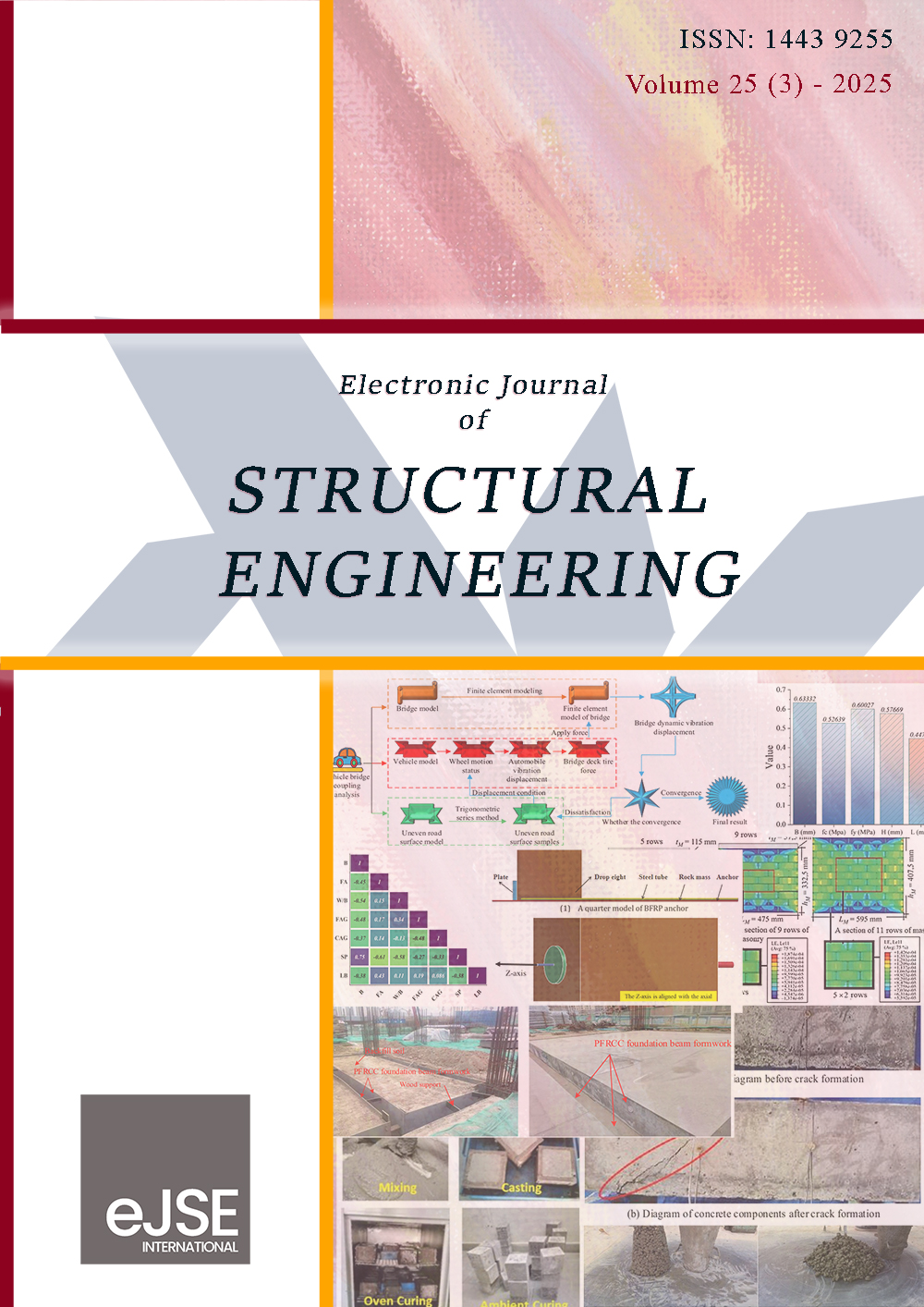
Volume 24, Issue 3 (2025) of the Electronic Journal of Structural Engineering showcases nine forward-looking studies that push the boundaries of materials innovation, structural performance, and intelligent analysis. Highlights include the use of hybrid machine learning to evaluate the rheology of self-compacting concrete, novel approaches to damage detection in bridges and concrete structures, and optimization methods for pervious concrete mixtures. Other contributions explore fly ash geopolymer mortars with ceramic waste, CFST stub column capacity prediction with ensemble models, and the effective stiffness of unreinforced masonry. Advanced simulations on basalt fiber-reinforced anchors and plant fiber composites for sustainable formwork further underline the issue’s focus on resilience and sustainability.
Together, these papers illustrate how cutting-edge computational tools and material innovations are shaping the future of structural engineering.
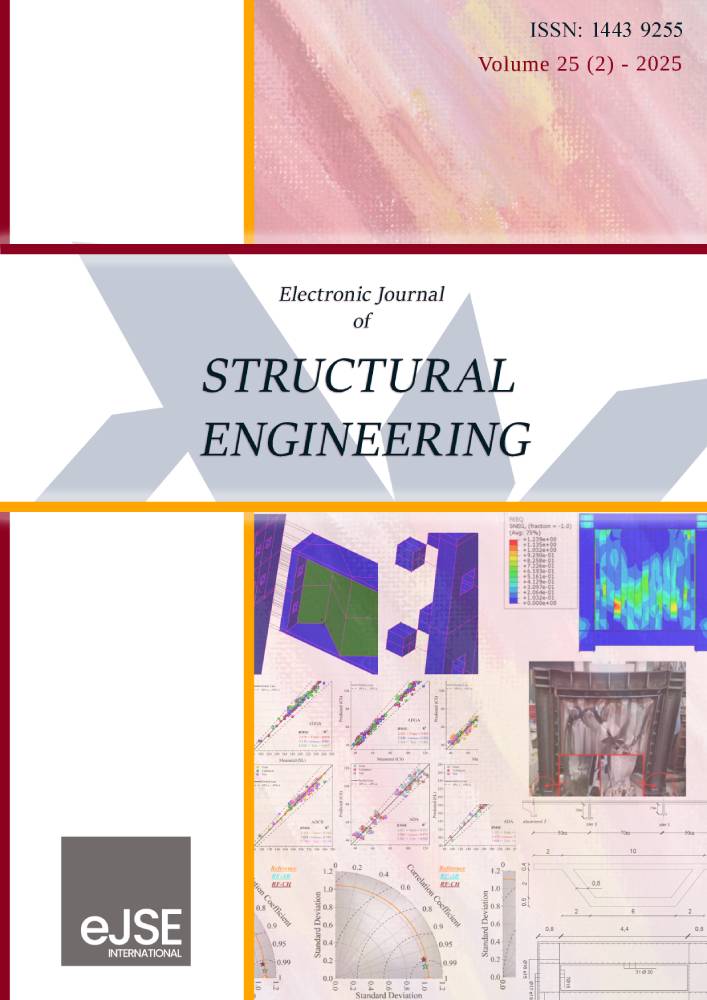
Volume 25, Issue 2 (2025) of the Electronic Journal of Structural Engineering presents five cutting-edge research papers exploring advanced topics in structural analysis, material science, and computational modeling. This issue delves into optimizing structural connections, predicting concrete properties, and understanding the impact of soil heterogeneity and structural design on seismic performance. Highlights include a study on optimizing structural connections through finite element analysis of extended end plates and bolt dynamics, and the predictive modeling of compressive strength and slump in high-performance concrete using machine learning techniques. Further research investigates the split tensile strength of fiber-reinforced recycled aggregate concrete through simulation employing tuned Random Forests Trees, and the effects of soil heterogeneity on the nonlinear response of highway bridges with conditionally simulated spatial variable movements. The issue concludes with an examination of the hysteretic behavior of fully connected and beam-connected flat-corrugated steel shear walls, considering different corrugation angles and orientations. Collectively, these papers contribute to the advancement of structural engineering through rigorous analysis and innovative methodologies.
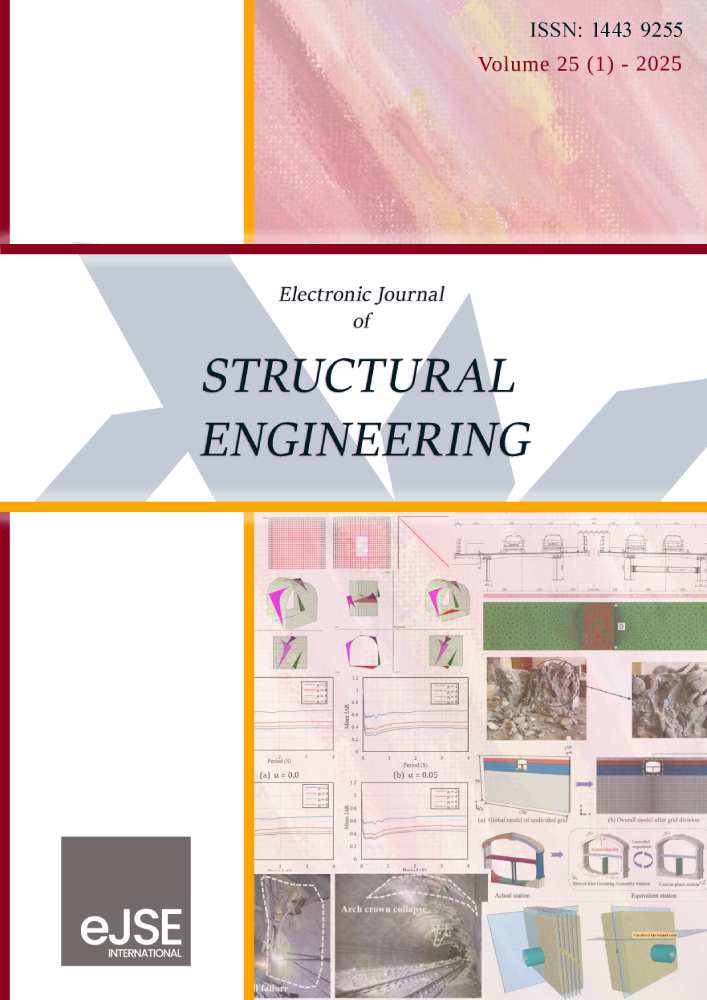
Volume 25, Issue 1 of the Electronic Journal of Structural Engineering presents nine insightful research papers addressing critical aspects of structural behavior and analysis. Topics span dynamic responses, underground structures, material properties, and computational modeling. Highlights include studies on the dynamic response analysis of dowel-slot grouting assembly stations under seismic loading, three-dimensional discrete element analysis of excavation face stability in deep-buried shield tunnels, and the strut method for analyzing confined masonry structures with openings. The issue also investigates the impact of incorporating recycled and natural fibers on concrete mechanical properties, the deformation and stress mechanisms in water conveyance tunnels crossing strike-slip faults, and the evaluation of parameters affecting the inelastic acceleration ratio. Further research delves into the stability analysis of surrounding rocks in deeply-buried underground chambers, mesoscale numerical studies of size effects on concrete fracture characteristics using the Finite Discrete Element Method (FDEM), and the mechanical properties of fewer-girder steel plate composite bridges during construction. Collectively, these papers contribute to the advancement of structural engineering through rigorous analysis and innovative methodologies.
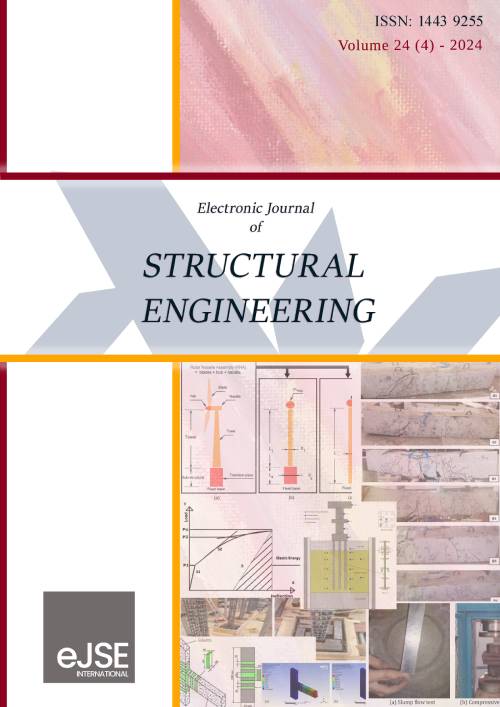
Volume 24, Issue 4 of the Electronic Journal of Structural Engineering features six cutting-edge research papers addressing key challenges in structural engineering. Topics include offshore wind turbine dynamics, advanced materials, and seismic performance. Highlights include studies on foundation stiffness for wind turbines, ductility in FRP-strengthened RC beams, seismic performance in liquefiable soils, and sustainable materials like high-volume fly ash mortar and ferrocement beams. The issue also explores strengthening techniques for RC beam-column joints under cyclic loads. Collectively, these papers advance structural engineering with innovative, sustainable solutions for modern infrastructure challenges.
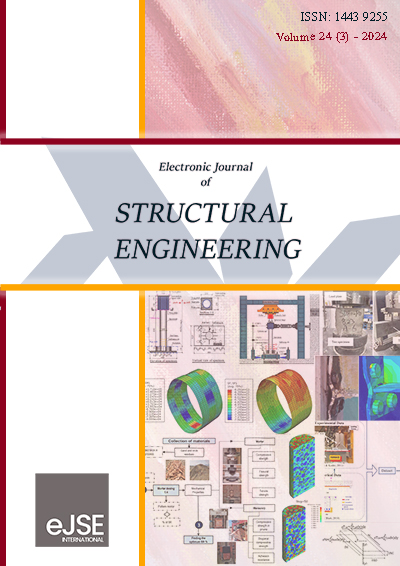
Volume 24, Issue 3 of the Electronic Journal of Structural Engineering features another exciting collection of eight research papers, advancing the frontiers of structural engineering with a focus on innovative materials, cutting-edge analysis, and performance prediction. This issue includes groundbreaking studies such as the Numerical Modeling of Steel Fiber Reinforced Recycled Concrete Filled Steel Tube Columns Under Cyclic Loading, providing new insights into enhancing structural resilience. Other notable topics include a simplified approach for calculating horizontal shear stress in composite beams with considerable width, and an in-depth study on the stress response of submarine shield segments under ultra-high water pressure. With research ranging from the mechanical properties and damage modeling of hybrid fiber reinforced concrete in freeze-thaw cycles to numerical simulations of carbon nanotube concrete, these papers offer vital contributions to sustainable, high-performance materials. This issue also covers advanced numerical analyses of end-plate connections under dynamic loading and evaluates the performance of ensemble machine learning algorithms in predicting fire resistance for FRP-strengthened concrete beams.
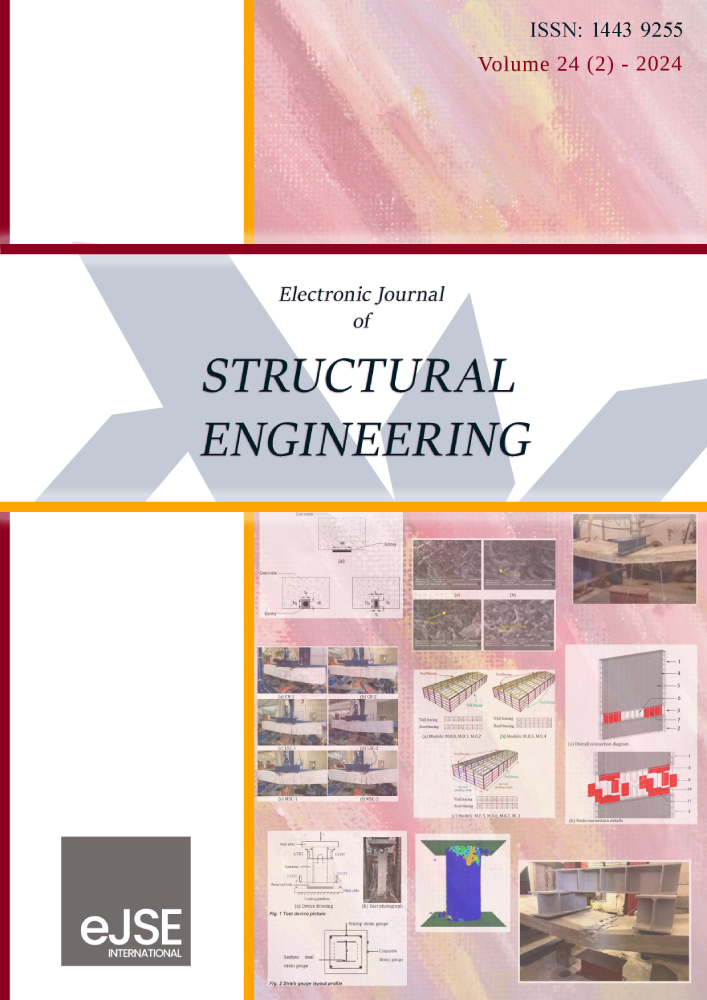
Welcome to Volume 24, Issue 2 of the Electronic Journal of Structural Engineering, featuring an exciting range of eight research articles in structural engineering, where we bring you a collection of cutting-edge research papers that delve into various aspects of structural engineering. This issue features groundbreaking studies that explore innovative materials, advanced techniques, and seismic performance of structural elements. With topics ranging from ACI development length provisions for RC slabs to the seismic performance of prefabricated composite shear walls, these papers provide actionable insights for researchers, engineers, and industry professionals aiming to advance structural engineering. Dive into this issue to uncover transformative solutions for more resilient and innovative construction practices.
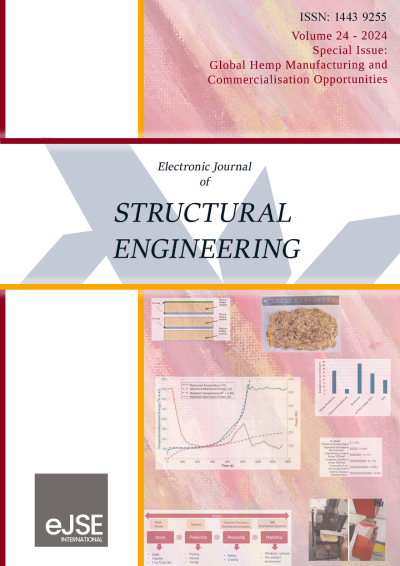
Discover the latest insights from the Global Hemp Summit 2023 with our special issue featuring five groundbreaking papers. Held at the University of Melbourne on 27-28 September 2023, this summit brought together experts to explore the potential of hemp across various domains. From analyzing market opportunities for hemp-lime composites in construction to evaluating the feasibility of producing hemp-based insulation, these papers offer valuable perspectives on harnessing the power of hemp for sustainable solutions. With topics ranging from microwave-assisted pyrolysis for waste management to establishing hemp value chains in Northern Australia, these papers provide actionable insights for researchers, policymakers, and industry professionals interested in unlocking the potential of hemp. Dive into this special issue to uncover the transformative possibilities of hemp for a greener and more sustainable future.
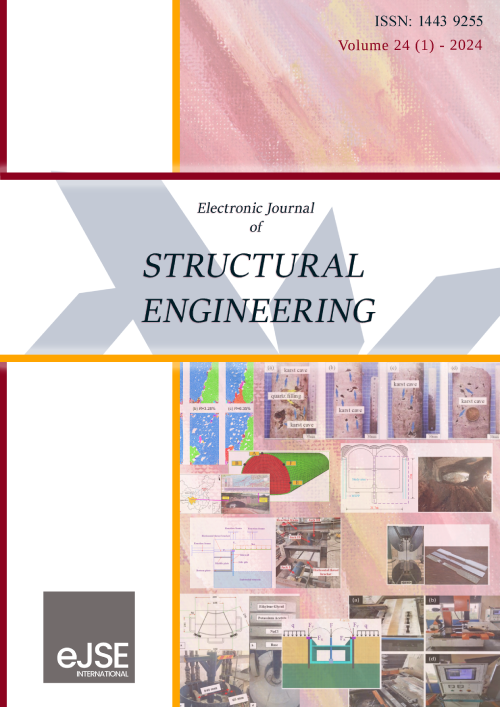
Welcome to Volume 24, Issue 1 of the Electronic Journal of Structural Engineering, featuring an exciting range of eight research articles in structural engineering.
This issue presents a comprehensive exploration of diverse topics within structural engineering, spanning from the investigation of residual mechanical properties of galvanized iron cold-formed steel sections to the examination of dynamic construction mechanics in metro station side piles. Readers gain insights into critical aspects such as the mechanical properties of karst limestone, the impact of composite materials on 3D-printed cores, and the evaluation of goaf stability in deep tunnel conditions. Further enriching the discourse, the issue addresses practical challenges such as the effect of de-icing chemicals on airport pavement performance and optimization of design practices in metro station construction. Additionally, the investigation into surrounding rock response in large slope tunnels offers valuable insights for underground infrastructure design. Each article presents unique findings that collectively advance the field of structural engineering, inviting readers to explore and deepen their understanding of the discipline's intricacies.
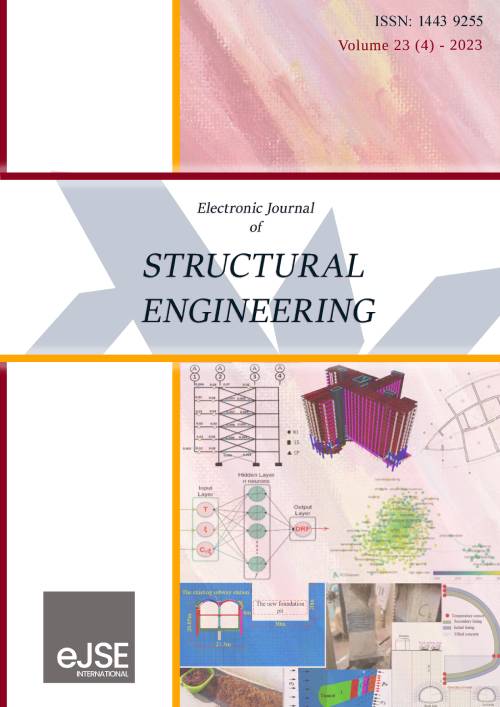
Welcome to this edition of the Electronic Journal of Structural Engineering, featuring a diverse array of research papers that explore key facets of structural engineering. This issue consisted of 13 manuscripts. From understanding water inrush in karst regions to assessing the impact of structural bracing on progressive collapse, these papers touch on seismic assessments, material advancements, and practical considerations in construction methods. Dive into this concise yet impactful collection, offering insights that span from foundational geological challenges to sustainable material choices and innovative construction techniques.
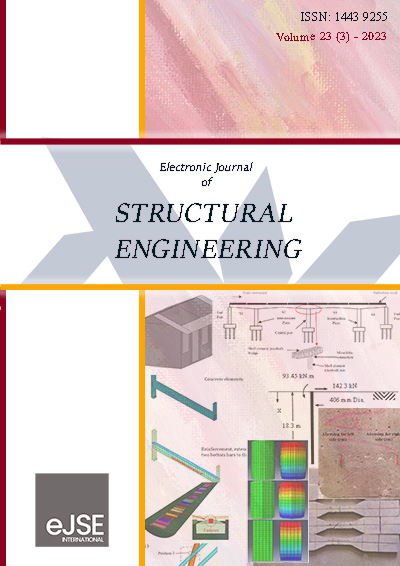
Welcome to the latest edition of the Electronic Journal of Structural Engineering, presenting an array of innovative research papers covering a wide spectrum of topics within the field. In this compilation, we focus on pivotal studies that explore the complexities and advancements in civil engineering. This issue consisted of 8 manuscripts. These include a Nonlinear Finite Element Analysis of laterally loaded piles in Layered Soils, a Numerical Study on Concrete Filled Steel Tubular Columns Under Compression, a Comparative Study comparing Sandwich Roof Panels with Coconut Fibre against Polyurethane Core, a Study of dynamic impact factors of high-speed railway bridges, Mechanical properties testing of plant fiber reinforced cementitious composites, Parameters Affecting Flexural Mechanism to Prevent Progressive Collapse of RC Buildings, a Laboratory study on concrete pavement containing blast furnace slag and Gilsonite, and a Dynamic response analysis of the process of the utility shield tunnel under-passing the operating subway tunnel. These papers offer valuable insights into various aspects of civil and structural engineering, contributing to the advancement of the field and promoting sustainable solutions.

Welcome to the latest issue of the Electronic Journal of Structural Engineering, featuring a collection of innovative research papers covering a wide range of topics in the field of civil engineering. In this issue, we focus on key areas such as machine learning-based reinforced concrete design for progressive collapse, compression and bond properties of fired clay brick masonry with cocopeat blended binding mortar, designing integrated management platforms for smart parks, developing sustainable composite materials, and reviewing stability considerations in steel structure design.
The first paper presents a novel approach to optimizing reinforced concrete design using machine learning techniques. The second paper investigates the bond and compression properties of fired clay brick masonry with cocopeat blended binding mortar, providing insights into the material's performance and potential applications.
The third paper presents a design system for an integrated management platform for smart parks, highlighting the importance of smart technologies in enhancing the sustainability and efficiency of urban spaces. The fourth paper focuses on developing a compression-moulded composite partitioning panel from banana fibres and PLA, exploring the feasibility of using sustainable materials in construction.
Finally, the fifth paper reviews the stability considerations in steel structure design, providing a comprehensive overview of the current state-of-the-art and identifying future research directions. We hope that this collection of papers will provide valuable insights into the latest developments in civil engineering research and inspire further innovation in the field.
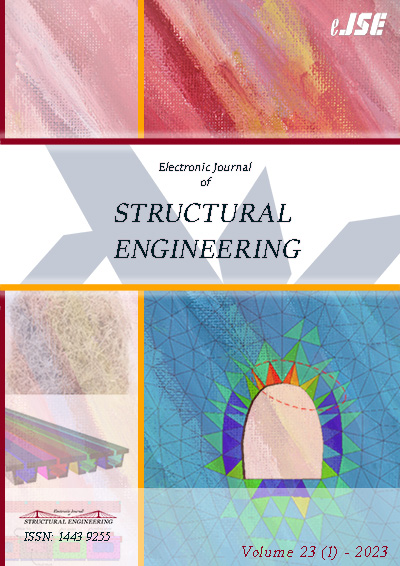
This issue of EJSE is packed with cutting-edge research on a variety of topics related to underground engineering and infrastructure. This issue delves into the study of rockburst tendency in deep underground engineering, examining the various factors that can influence this phenomenon.
Next, this issue examines the seismic performance of RC clinker silos, an important type of industrial structure. This issue also looks at the use of BIM in the construction data association management of urban rail transit projects.
In addition, this issue presents comparative examinations of structural responses in concrete reinforced with treated and untreated oil palm empty fruit bunch fibers. This issue also analyzes the bridge deck of transversely post-tensioned concrete box girder bridges and research on rockburst proneness evaluation method of deep underground engineering based on multi-parameter criterion.
This issue is a must-read for anyone working in the field of underground engineering and infrastructure.

On the twenty-first publishing, Electronic Journal of Structural Engineering consisted of 9 manuscripts.
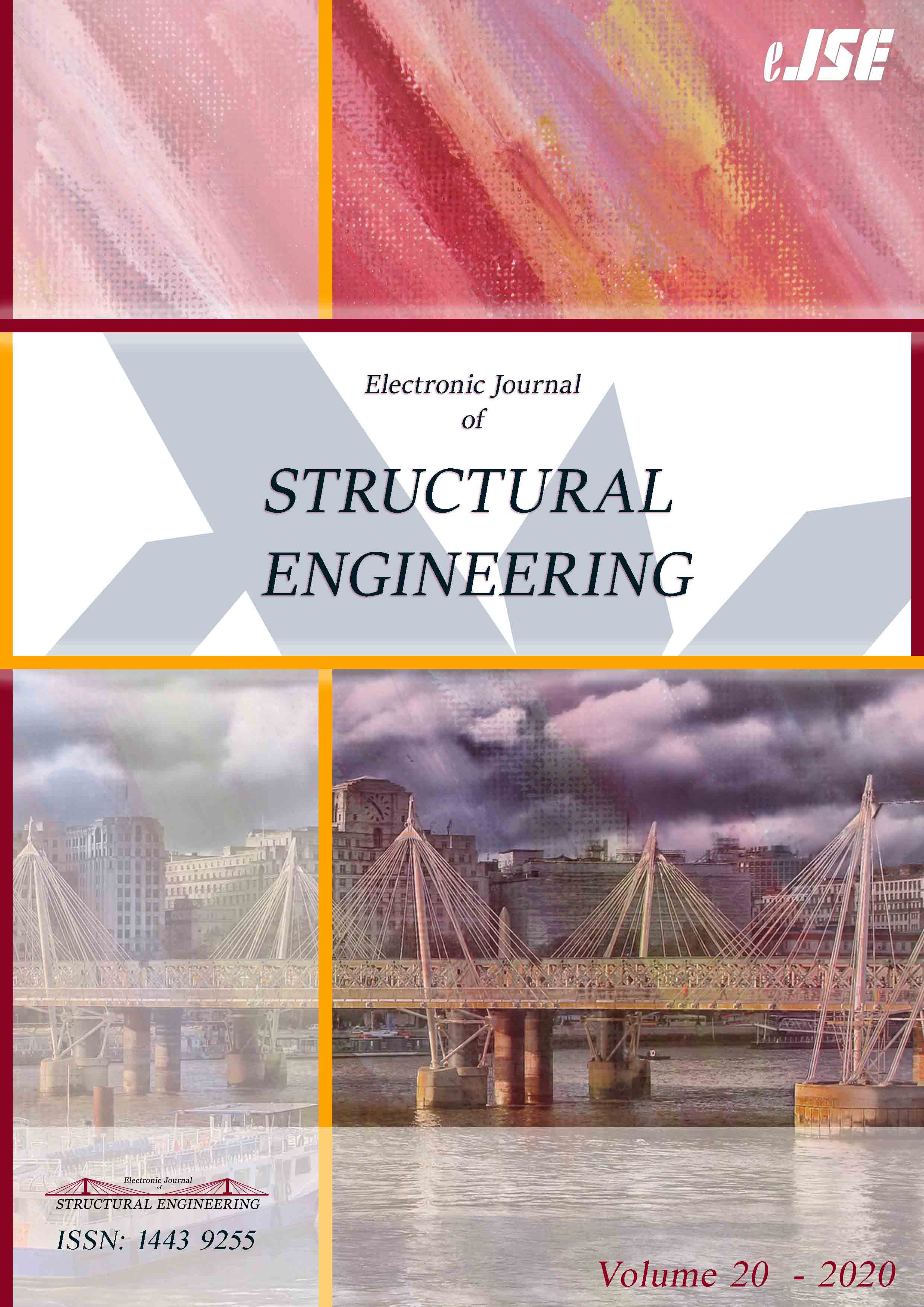
On the twentieth publishing, Electronic Journal of Structural Engineering consisted of 12 manuscripts.

On the nineteenth publishing, Electronic Journal of Structural Engineering consisted of 9 manuscripts.
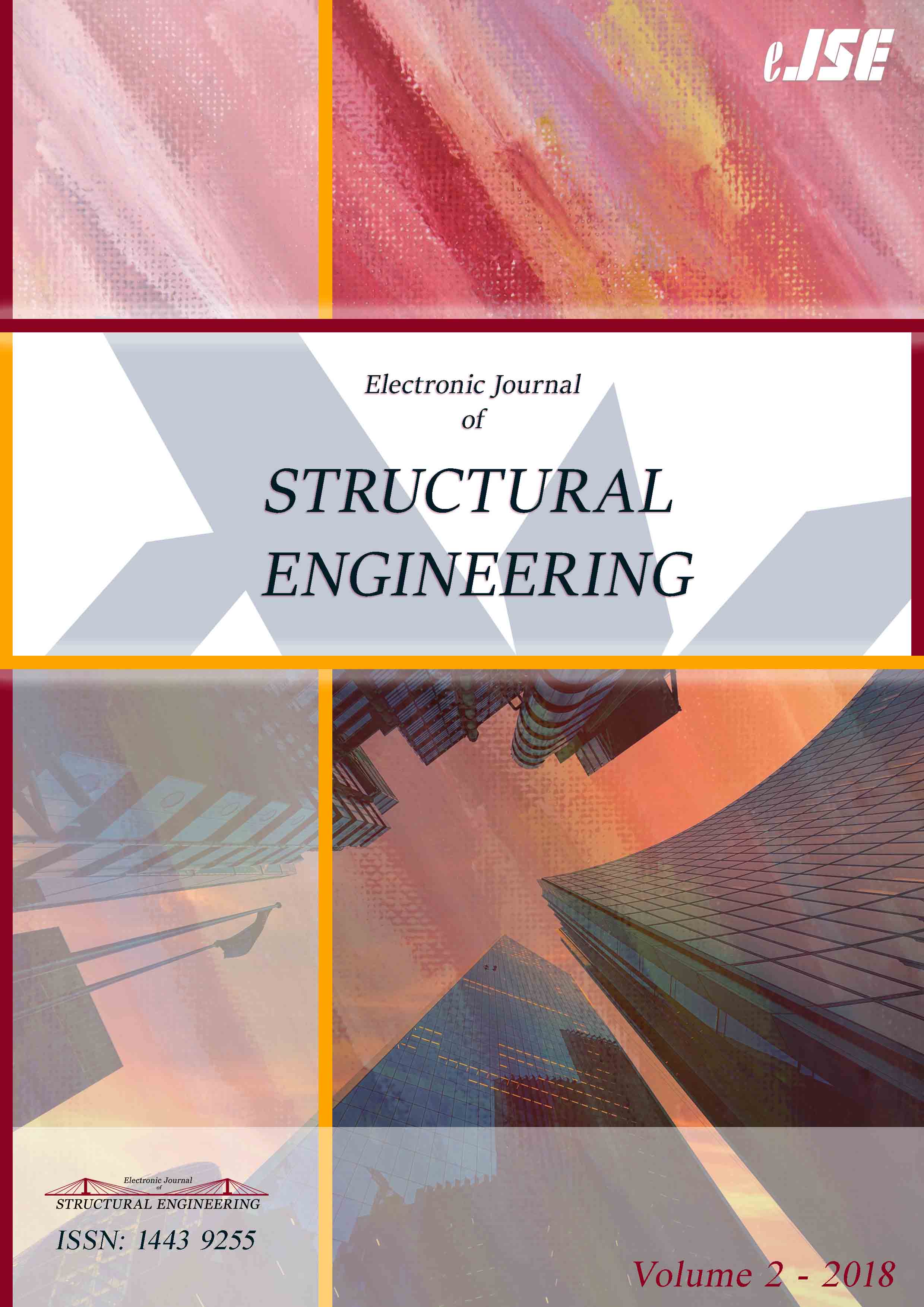
On the eighteenth publishing, Electronic Journal of Structural Engineering consisted of 20 manuscripts.
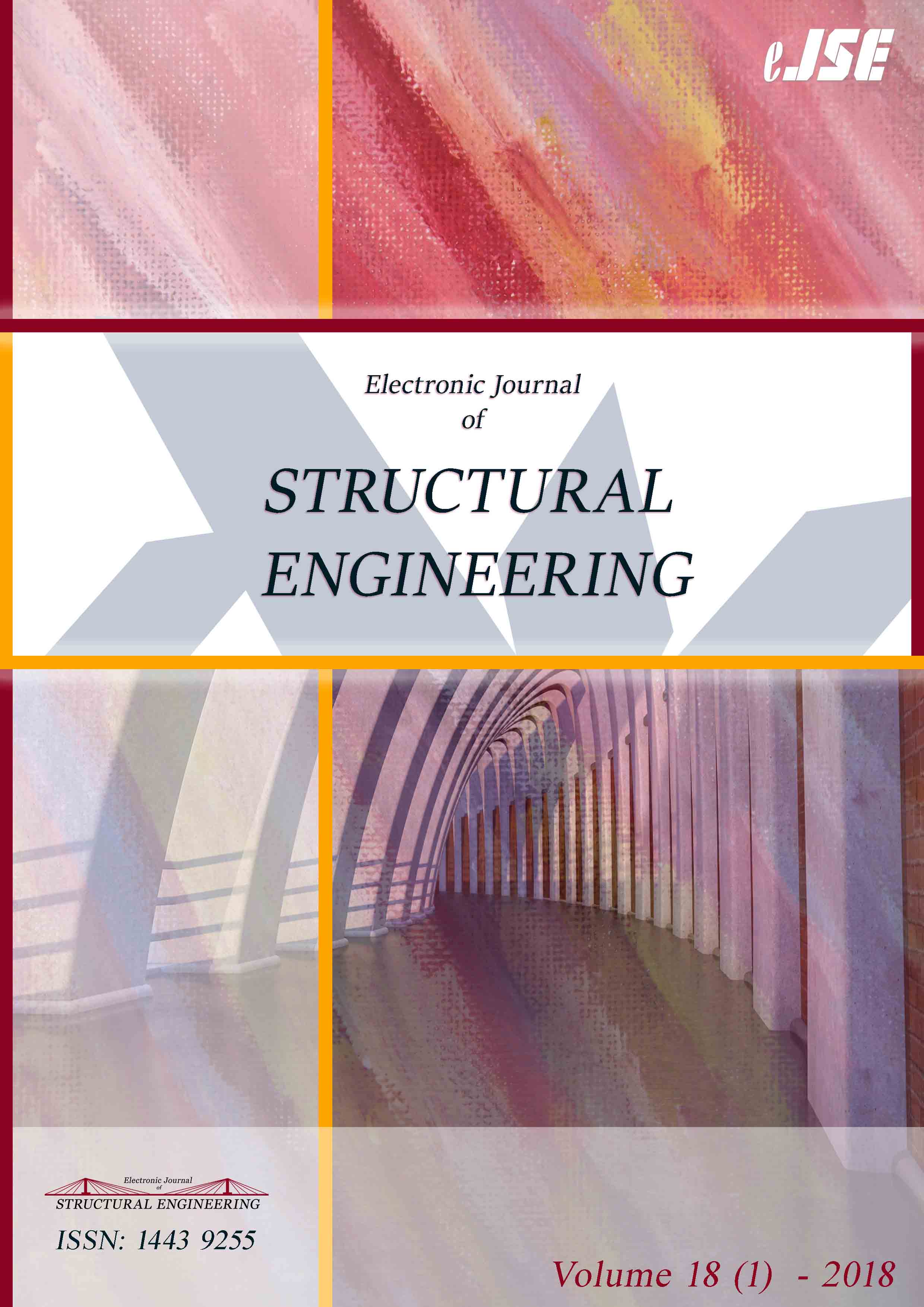
The theme of this Special Issue of the Electronic Journal of Structural Engineering (EJSE) is “Structural Performance Assessment of Civil Infrastructure”. The importance of this theme has been exemplified through a sequence of research projects undertaken as a part of the Infrastructure Cluster of the Australian Indonesia Centre(AIC). Assets explored in this edition of the journal range from consideration of high rise reinforced concrete framed buildings, to bridges, marine structures, railway tracks, railway vehicles to utility assets such as water pipes. Numerousadvanced technologies have been explored that include consideration of the complex interpretation of dynamic evaluations to fibre optic sensors and a range of non-destructive testing techniques. The insights gained from these focussed research projects provides a platform for considering innovative approachesfor safe performance assessment of the structural life of infrastructure assets.
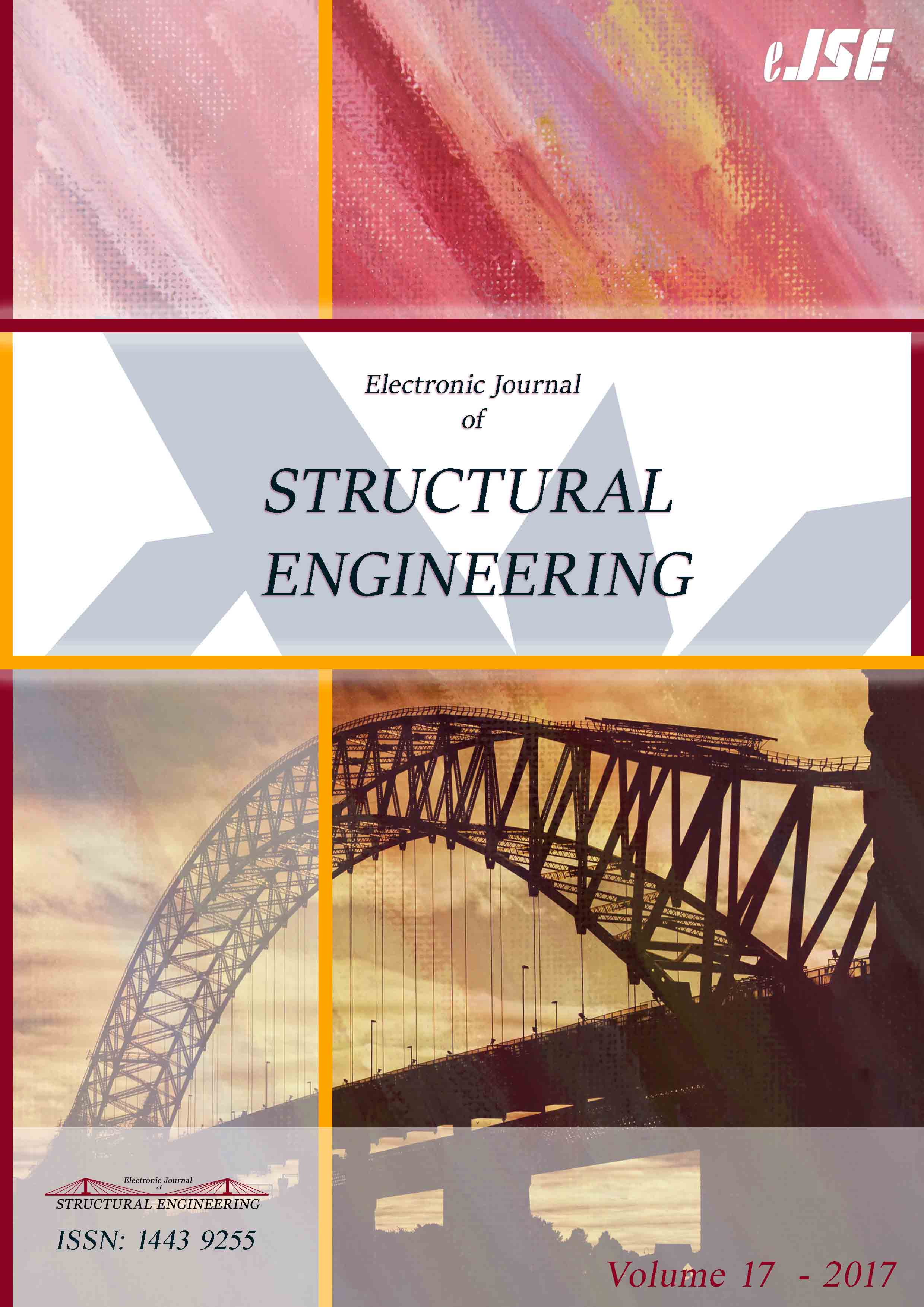
On the seventeenth publishing, Electronic Journal of Structural Engineering consisted of 10 manuscripts.

On the sixteenth publishing, Electronic Journal of Structural Engineering consisted of 8 manuscripts.

On the fifteenth publishing, Electronic Journal of Structural Engineering consisted of 7 manuscripts.

Structural Health Monitoring (SHM) is defined as the use of an on structure sensing system to monitor the performance of the structure and evaluate its health state. For the last two decades SHM has been attracting enormous research efforts around the world because it targets at monitoring structural conditions to prevent catastrophic failure, and to provide quantitative data for engineers and infrastructure owners to design reliable structures and economical asset management plans. SHM has been accepted as a justified effort for civil structures. It is a worldwide trend to install a SHM system on a significant structure, e.g. Burj Khalifa tower in Dubai, Huey P. Long Bridge in USA, Haram Grand Mosque Expansion in Saudi Arabia, Millau Viaduct bridge in France. This special issue on Structural Health Monitoring of the Electronic Journal of Structural Engineering has brought together papers from researchers, civil engineers, designers, as well as responsible persons from government and road/highway authorities who have been working in this area for improving the service life, safety and reliability of civil structures.
Electronic Journal of Structural Engineering is an open access journal, so articles are freely available to the readers.
Acceptance Rate: 19%
Desk Reject Rate: 65%
Days to Accept : 159
Days to Reject: 48
